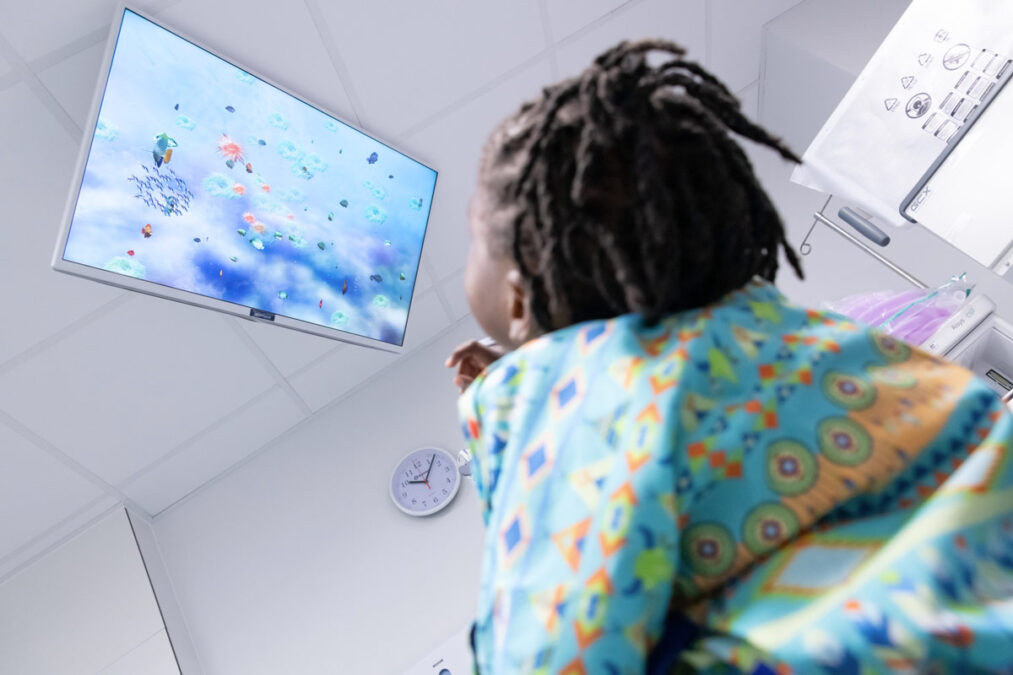It is estimated that 1 in every 500 children under 15 will develop cancer. Around 1,800 new childhood cancer cases are diagnosed annually in the UK. Cancer is a rare disease in children, but it is essential to be aware of the signs and symptoms so that it can be diagnosed early.
How long can a child have cancer without knowing?
The time a child can have cancer without knowing depends on the type of cancer and how fast it is growing. Some cancers, such as leukaemia, can develop quickly and may be diagnosed within a few weeks or months. Other cancers, such as brain tumours, may grow more slowly and not be diagnosed for years.
Children with cancer are generally more likely to have symptoms than adults. This is because children’s bodies are still growing and developing, so they may be more sensitive to the effects of cancer.
Are childhood cancers common?
Cancer in children is not common in the UK. It is estimated that 1 in every 500 children under 15 will develop cancer.
The most common types of childhood cancer in the UK are:
- Leukaemia: This is cancer of the blood cells. It is the most common childhood cancer, accounting for around 30% of all cancer symptoms.
- Brain tumours: These are the second most common type of childhood cancer. They account for about 25% of all cancer that affects young children.
- Non-Hodgkin lymphoma: This is a cancer of the lymph system. It accounts for around 10% of all childhood diagnoses.
- Soft tissue sarcomas: These are cancers of the connective tissues. They account for approximately 5% of all children with cancer.
- Wilms tumour: This is a cancer of the kidneys. It accounts for around 4% of all cancer cases in children.
The good news is that childhood cancer survival rates have improved in recent years. Around 80% of children diagnosed with cancer in the UK will survive for at least five years. This is up from about 50% in the 1970s.
What are the signs of cancer in children?
Some of the most common signs and red-flag symptoms of suspected cancer in children include:
- Unexplained lump, swelling, swollen lymph nodes or mass anywhere on the body
- Tummy (abdominal) pain or swelling that doesn’t go away
- Back or bone pain that doesn’t go away, or pain that wakes your child up in the night
- Unexplained seizures (fits), neurological symptoms and changes in behaviour and mood
- Headaches that don’t go away
- Frequent or unexplained bruising or a rash of small red or purple spots
- Unusual paleness
- Sudden weight loss
- Feeling tired all the time
- Leg weakness
- Frequent infections or flu-like symptoms
- Unexplained vomiting, especially early morning vomiting, and abdominal distension
- Unexplained fever, high temperature or sweating or night sweats
- Feeling short of breath
- Changes in the appearance of the eye or unusual eye reflections in photos
It is important to remember that these symptoms are not always cancer, and your child may experience different symptoms worth noting, such as easy bruising of the skin, which can cause a lot of parental concern.
It is always best to see a doctor if your child has any concerning symptoms. The doctor can rule out other possible causes and determine if further testing is needed. Early diagnosis with proper clinical assessment can help deliver the best outcomes.
Are signs of cancer similar to other childhood illnesses?
Some early signs and symptoms of cancer in children can be similar to those of common childhood illnesses. This is why it is essential to see a doctor if your child has any of the symptoms mentioned above so that the doctor can rule out common illnesses and determine if more testing is needed.
Most childhood cancers can be challenging to diagnose, and their common symptoms can be similar to many childhood illnesses, so it can be hard to tell if your child has cancer just based on their symptoms.
A doctor must do a physical examination to check for pediatric solid tumours or a mediastinal mass causing shortness of breath, which can deteriorate quickly with airway obstruction. They will also order laboratory tests to rule out other possible causes.
What should you do if your child is experiencing signs of cancer?
You can help your doctor diagnose or rule out cancer by writing down your child’s symptoms when they started, and how often they occur. This will help the doctor understand their symptoms and diagnose them quicker.
Try to be specific when explaining your child’s symptoms to your doctor. Don’t just say that your child is feeling tired all the time. Describe how tired they are and how it is affecting their daily activities. Note down other symptoms that may not be included on the above list.
It can also be helpful to share if you have a family history of cancer or other serious health conditions. If close family members have a diagnosis or are currently receiving cancer care, it can be helpful for your doctor to know this. There may be an increased risk of them developing a rare condition that can be identified with other tests.
How long does a cancer diagnosis for a child take?
The time it takes to diagnose cancer in a child in the UK can vary depending on the type of cancer, the symptoms presenting, and the availability of tests. However, in general, the diagnosis process should not take more than a few weeks.
If your child’s doctor suspects cancer, they will order some tests, such as a blood test, complete blood count, imaging tests, or biopsies. The results of these tests will help the doctor to make a diagnosis. If the doctor does diagnose cancer, they will discuss the best care and management options with you about pediatric oncology.
Learn about private cancer treatment for childhood cancers
Proton beam therapy is a new, advanced treatment for cancer. It is a type of radiation therapy that uses protons instead of electrons. Protons are more targeted than electrons, which means they can deliver a higher radiation dose to the tumour while sparing the surrounding healthy tissue. This can lead to fewer side effects and improved quality of life for patients.

Proton beam therapy is available at Proton International London, the first proton beam machine in London. PIL is located within the private patient unit of University College London (UCH).
Proton International London currently offers proton beam therapy for a limited number of cancers, including childhood cancers, skull-based tumours, and head and neck cancers. However, the clinic plans to expand its offerings in the coming months to include other types of cancer, such as prostate cancer.
Proton beam therapy is a more expensive treatment than traditional radiation therapy. Still, it can be a valuable option for patients at risk of side effects from conventional radiation therapy or who have tumours that are difficult to treat with traditional radiation therapy.
Proton International is a leading provider of proton beam therapy. The company has over 30 years of experience treating patients with proton beam therapy in the United States. Proton International is committed to providing patients with the highest quality care possible.
In summary
Proton beam therapy is a good option for childhood cancer treatment in the UK because it is a more targeted form of radiation therapy that can deliver a higher dose of radiation to the tumour while sparing the surrounding healthy tissue.
In addition, proton beam therapy is available at a limited number of centres worldwide, and the Proton International London (PIL) clinic is the first proton beam machine in London. This means that patients in the UK who need proton beam therapy do not have to travel abroad for treatment.
Please read our guide to learn about proton beam therapy for children here.
Private proton beam therapy for children living in the UK is not currently available at Proton International London. In the UK, paediatric proton therapy is provided through the NHS. If your child may benefit from this treatment, please speak with their healthcare team or oncologist for further information.





